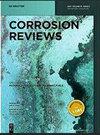Quantum chemical analysis of amino acids as anti-corrosion agents
IF 3.2
4区 材料科学
Q3 ELECTROCHEMISTRY
引用次数: 0
Abstract
Abstract Anti-corrosion properties of L-lysine (Lys), S-methyl (S-Met), L-cysteine (Cys), L-glycine (Gly), valinin (Val), and L-glutamine (Glu), all of which are amino acids, were evaluated on the surfaces of iron, copper, and aluminum in both the protonated and non-protonated states in both the gas and aqueous phases at their optimal symmetry. Analysis was performed based on density functional theory (DFT) calculation at 6-311++G(d,p) and B3LYP level. Monte Carlo simulation generated top and side views of the most energetically stable configuration for the adsorption of all selected amino acids on Al (110), Fe (110), and Cu (110). This suggests that the Monte Carlo simulation was able to accurately predict the adsorption properties of the amino acids on the selected metal surfaces. Glu was found to be the strongest inhibitor amongst the six molecules tested, as it had the lowest energy difference and the highest reactivity, according to the decreasing sequence of ∆E values. Electronegativity difference of the compounds investigated from highest to lowest is Lys, S-Met, Cyst, Gly, Val, and Glu. This order is also reflected in the polarizability of the compounds, with Lys having the highest polarizability and Glu having the lowest, suggesting that Glu may have the highest inhibitory efficacy.氨基酸作为防腐剂的量子化学分析
摘要以最佳对称性评价了L-赖氨酸(Lys)、S-甲基(S-Met)、L-半胱氨酸(Cys)、L-甘氨酸(Gly)、缬氨酸(Val)和L-谷氨酰胺(Glu)在铁、铜和铝表面的质子化和非质子化状态下的气相和水相抗腐蚀性能。基于密度泛函理论(DFT)计算,在6-311++G(d,p)和B3LYP水平上进行了分析。蒙特卡罗模拟生成了所有选定氨基酸在Al(110)、Fe(110)和Cu(110)上吸附的能量最稳定构型的俯视图和侧视图。这表明蒙特卡罗模拟能够准确预测氨基酸在所选金属表面上的吸附性质。Glu被发现是测试的六种分子中最强的抑制剂,因为根据∆E值的递减顺序,它具有最低的能量差和最高的反应性。研究的化合物的电负性差异从高到低依次为Lys、S-Met、Cys、Gly、Val和Glu。这种顺序也反映在化合物的极化率中,Lys具有最高的极化率,Glu具有最低的极化率。这表明Glu可能具有最高的抑制效力。
本文章由计算机程序翻译,如有差异,请以英文原文为准。
求助全文
约1分钟内获得全文
求助全文
来源期刊

Corrosion Reviews
工程技术-材料科学:膜
CiteScore
5.20
自引率
3.10%
发文量
44
审稿时长
4.5 months
期刊介绍:
Corrosion Reviews is an international bimonthly journal devoted to critical reviews and, to a lesser extent, outstanding original articles that are key to advancing the understanding and application of corrosion science and engineering in the service of society. Papers may be of a theoretical, experimental or practical nature, provided that they make a significant contribution to knowledge in the field.
 求助内容:
求助内容: 应助结果提醒方式:
应助结果提醒方式:


